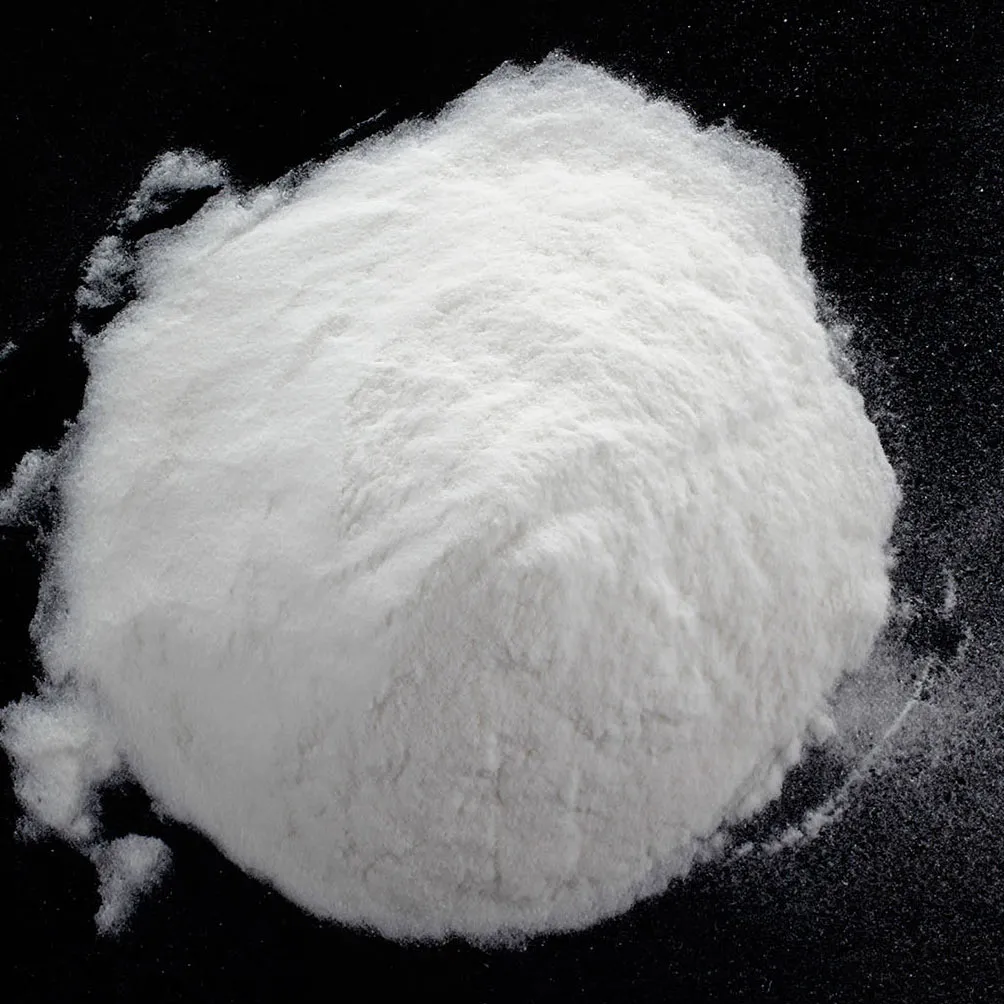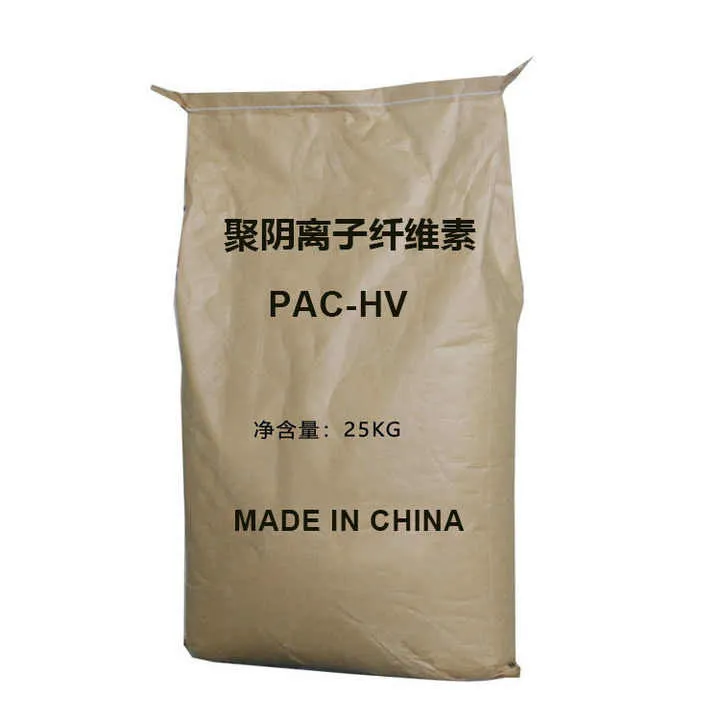Poly Anioniccellulose (PAC) has redefined modern fluid loss control, viscosity modification, and stabilization across oil & gas, water treatment, mining, and construction sectors. This guide dives deep into the technical, application, manufacturing, and comparative aspects of Poly Anioniccellulose (PAC), offering real-world data, authoritative insights, and practical cases from industry experience.

1. Industry Trends: Poly Anioniccellulose (PAC) Market Overview
According to IMARC Group's 2023 Report, the global Poly Anioniccellulose (PAC) market is projected to exceed USD 640 million by 2028, driven by expanding drilling activities, stricter environmental norms, and advanced formulation in oilfield chemicals.
Key Emerging Trends:
- Increasing adoption in offshore and unconventional drilling due to PAC's robust salt and temperature resistance.
- Growing demand for biodegradable and eco-friendly drilling additives aligned with stringent regulatory frameworks (ISO 13503, API 13A).
- Rapid technology iterations in custom grade PAC for challenging geologies and specialty fluids.
- Rising usage in municipal water treatment and metallurgic pulp & paper sectors.
2. Poly Anioniccellulose (PAC): Core Technology Parameters
Technical Specifications Comparison
| Parameter | PAC-HV (High Viscosity) | PAC-LV (Low Viscosity) | International Standard |
|---|---|---|---|
| Apparent Viscosity (mPa·s, 1% solution) | ≥40 | ≤40 | API 13A, ISO 13500 |
| Moisture Content (%) | ≤10 | ≤10 | ISO 760 |
| pH (1% solution) | 6.0–8.5 | 6.0–8.5 | ISO 976 |
| Degree of Substitution | 0.8–1.2 | 0.8–1.2 | EN 15522 |
| Solubility | Full water solubility | Full water solubility | – |
| API Fluid Loss (mL) | ≤23 | ≤23 | API 13A |
| Heavy Metals (ppm) | <15 | <15 | FDA/ISO |
| Thermal Stability (°C) | to 150 | to 130 | – |
| Typical Appearance | White, free-flowing | White, free-flowing | – |
Key Takeaways:
PAC-HV offers higher thickening and superior fluid loss control, essential for high-performance drilling fluids. PAC-LV is ideal where low viscosity is preferred but effective filtration reduction is required. Both grades strictly conform to API 13A and ISO 13500 global standards.
3. Poly Anioniccellulose (PAC) Manufacturing Process Flow
1. Alkali Activation (NaOH treatment) → 2. Monochloroacetic Acid Etherification (Substitution reaction) → 3. Neutralization & Washing (Removal of by-products) → 4. Drying (Controlled temperature) → 5. Grinding & Sieving (Particle size adjustment) → 6. Quality Inspection (API/ISO/ANSI compliance, batch traceability)
Key Control Points:
- Raw Material: Pharmaceutical-grade cellulose, NaOH, monochloroacetic acid
- Critical Process Control: Degree of substitution; moisture target achieved during drying
- Testing: Viscosity by Brookfield, fluid loss by standard API filter press, heavy metal analysis (ISO), particle size (laser diffraction)
Material & Processing Notes
- Primary Material: High-purity cellulose fibers, ensuring minimal insoluble residue.
- Manufacturing Techniques: Etherification via chemical substitution, followed by precision CNC milling for uniform particles (usually ).
- Quality Controls: Adherence to ISO 9001, ANSI, and API Spec Q1 for batch traceability, viscosity, and purity.
- Typical Shelf Life: 24–36 months when kept cool and dry; batch-labeled for tracking.
- Industries Served: Oil & Gas (drilling and completion), Municipal & Industrial Water Treatment, Metallurgy, Mining, and Construction chemicals.

4. Competitive Analysis: Major Poly Anioniccellulose (PAC) Vendors
| Company | Origin | Certification | Annual Output (t) | Notable Feature |
|---|---|---|---|---|
| Dow Chemical | USA | ISO 9001, API | 45,000+ | Highly purified PAC/HV grades with FDA clearance |
| CP Kelco | USA/Denmark | ISO 14001, ISO 9001 | 32,000 | Biodegradable & food-grade variants |
| Shandong Tongli | China | API, ISO, SGS | 38,000 | Customized PAC-LV for high salinity/cold wells |
| SNF Floerger | France | API, ISO | 41,000 | Versatile grades for diverse fluids |
| TANGZHI | China | ISO 9001, API, SGS | 25,000 | OEM/ODM support; rapid response; advanced R&D |
How does Poly Anioniccellulose (PAC) from TANGZHI stand out?
- Stringent adherence to global standards (API, ISO, SGS)
- Extensive OEM/ODM capacity for tailored viscosifier and loss circulation formulations
- 24/7 technical support, rapid custom sampling
- Global clientele covering drilling contractors, water plants, and mining groups
5. Custom Formulation & Service Process
- Application Analysis: In-depth consultation to decode client’s well profile, water salinity, formation temperature, system requirements.
- Grade Customization: Tailoring molecular weight, DS, particle size, and viscosity to ensure optimal performance for the intended field.
- Sample Testing: Free expedited samples (500g–1kg), with laboratory reports for viscosity, fluid loss, contamination resistance.
- Contract Finalization & Production: Batch-specific manufacturing ensuring ISO/API compliance and traceability.
- Logistics & Support: Flexible delivery FOB/CIF/DDP, with full documentation (MSDS, TDS, COA, Origin certificate, etc.), 7x24 support and technical consultancy.
Service Case Highlight – Deepwater Well Drilling in Oman
Solution: Custom Poly Anioniccellulose (PAC)-HV, with cross-linked polymer backbone, pH modifier for brine compatibility.
Results: API fluid loss dropped by 45%, wellbore stability improved; saved $110k in potential NPT (Non-Productive Time) over three months.
6. Application Scenarios & Customer Feedback
Where is Poly Anioniccellulose (PAC) Used?
- Oil & Gas Drilling Fluids: Superior fluid-loss reduction (API
- Municipal & Industrial Water Treatment: Efficient clarification, stable flocculation, low environmental residue. Used in UF/RO systems for pre-treatment.
- Mining & Metallurgy: Improved thickener performance and higher yield.
- Cementing & Construction: Anti-liquation, improved slurry workability and adhesion.
Customer Review: Kuwait Oil Company, 2023
“By switching to Poly Anioniccellulose (PAC) from TANGZHI, we managed to reduce fluid loss by over 42% in challenging wells, minimizing mud costs and non-productive time. Responsive custom formulation support was key to our outcome.”
7. Warranty, Lead Time, and Customer Support
- Lead Time: Stock PAC grades, 3–7 days; custom grades, 12–18 days lead time.
- Warranty: 24 months shelf life with batch traceability; immediate replacement for technical non-conformity (ISO/SGS report required).
- Customer Support: 24x7 hotline & email, on-site/remote technical troubleshooting, multi-language service (EN, CN, ES, RU).
- Documentation: MSDS, TDS, COA, compliance certificates and traceability QR provided in every shipment.
8. Poly Anioniccellulose (PAC) Data Trend Analysis
Interpretation: Over the last decade, continuous innovation in Poly Anioniccellulose (PAC) synthesis has led to higher viscosity, improved fluid loss performance, and greater thermal stability – directly reflecting advances in process control and raw material purification.
9. FAQ: Professional FAQ on Poly Anioniccellulose (PAC)
Q1: What is the degree of substitution (DS) in PAC, and why is it critical?
DS represents the average number of carboxymethyl groups attached per glucose unit in the cellulose backbone. In Poly Anioniccellulose (PAC), the optimum DS (0.8–1.2) ensures maximum solubility, fluid loss control, and salt tolerance needed for oilfield and water treatment operations.
Q2: What mesh size is PAC typically sieved to, and how does it impact performance?
Most PAC is ground and sieved to 80 to 200 mesh (75-180μm). Finer particle size ensures faster dissolution and stable fluid rheology in drilling or treatment systems.
Q3: Which industry standards must PAC comply with?
Leading Poly Anioniccellulose (PAC) grades conform to API 13A, ISO 13500, SGS and, for food-contact grades, FDA and EN 15522.
Q4: How does PAC perform in high-salinity and high-temperature environments?
PAC demonstrates excellent electrolyte tolerance (Ca2+, Mg2+ up to 25,000 mg/L) and remains stable at temperatures up to 150°C, making it ideal for HPHT drilling, deep well, and EOR applications.
Q5: What is the typical shelf life and optimal storage for PAC?
Under desiccated, airtight storage (
Q6: Can PAC be used in potable/membrane water treatment?
Yes. Food-grade PAC, free of heavy metals and formaldehyde, is widely applied in potable water pretreatment and ultrafiltration, compliant with international hygiene standards.
Q7: How is PAC packaged and what are typical delivery forms?
Standard packaging: 25kg Kraft bags, jumbo bags (500kg/ton). Custom bagging and labeling per client’s requirements; vacuum sealing for extended shelf life.
10. Authoritativeness & International Validation
- Certifications: ISO 9001, API Spec Q1/Q2, SGS test reports, REACH compliance (Europe), FDA (Food Grade, USA) available.
- Cooperation Partners: Sinopec, Schlumberger, Kuwait Oil Company, Veolia, local water authorities (EU/Gulf/SEA).
- Research Citations: SAGE: Impact of PAC in Deep Well Drilling; Elsevier: PAC Salt Tolerance Study
11. References & Further Reading
- SPE OnePetro: Applications of PAC in Drilling
- ResearchGate: The Effect of PAC on Filtration Control and Viscosity
- Cellulose Chemistry Communications






















